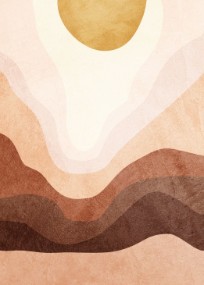Though pop culture often portrays queer people successfully coming out young, a generation of our closeted LGBTQ elders might disagree.
YOU MIGHT ALSO LIKE
CLEAR ALL
BY TOPIC
BY TYPE
FILTER

TOPIC
- Well-Being (23)
- Identity (22)
- Nonbinary Well-Being (22)
- Gender Identity (20)
- Physical Health (18)
- Athlete Well-Being (16)
- Transitions (15)
- Homophobia (14)
- LGBTQIA Sexuality (14)
- Black Well-Being (12)
- Authenticity (9)
- Body Image (9)
- Emotional and Mental Health (9)
- Family Acceptance (9)
- Exercise (8)
- Gender Challenges (8)
- LGBTQIA Children (8)
- Self-Acceptance (8)
- Self-Expression (8)
- Women’s Well-Being (8)
- Young Adult Well-Being (8)
- Autism (7)
- Belonging (7)
- Creative Well-Being (7)
- Cross-Cultural Dynamics (7)
- Identity Shifts (7)
- Mind-Body Connection (7)
- Racism (7)
- Search for Purpose (7)
- Self-Care (7)
- Speaking Your Truth (7)
- Happiness (6)
- Neurodiversity (6)
- Activism/Service (5)
- Buddhism (5)
- Diet and Nutrition (5)
- Discrimination (5)
- Eating Disorders (5)
- Gender and Spirituality (5)
- Healthy Eating (5)
- Latinx Well-Being (5)
- Longevity (5)
- Parenting (5)
- Racial Identity (5)
- Retirement (5)
- Social Justice (5)
- Veteran Well-Being (5)
- AAPI Well-Being (4)
- Fellowship and Community (4)
- Finding Meaning (4)
- Gender Discrimination (4)
- Indigenous Well-Being (4)
- Mindfulness (4)
- Reproductive Health (4)
- Resilience (4)
- Self-Discovery (4)
- Self-Healing (4)
- Self-Worth (4)
- Work-Life Balance (4)
- Cancer (3)
- Communication Skills (3)
- Connection with Nature (3)
- Cross-Cultural Parenting (3)
- Curiosity (3)
- Disabled Well-Being (3)
- Divorce and Breakup (3)
- Gender Justice (3)
- Habits of Mind (3)
- LGBTQIA Relationships (3)
- Meditation (3)
- Mentoring (3)
- Midlife Crisis (3)
- Motherhood (3)
- Neuroscience (3)
- Racial Justice (3)
- Relationship with Time (3)
- Self-Actualization (3)
- Self-Esteem (3)
- Sleep (3)
- Stress Management (3)
- Values (3)
- Weight Concerns (3)
- AIDS (2)
- Caregiver Well-Being (2)
- Climate Change (2)
- Community Healing (2)
- Compassion (2)
- Competition (2)
- Courage (2)
- Death or Loss of a Loved One (2)
- Empowerment (2)
- Facing Own Death (2)
- Faith and Identity (2)
- Forgiveness (2)
- Generosity (2)
- Gratitude (2)
- Growth Mindset (2)
- Illness and Injury (2)
- Immortality (2)
- Kindness (2)
- Letting Go (2)
- LGBTQIA Parents (2)
- Lifestyle Medicine (2)
- Military to Civilian Re-entry (2)
- Mindfulness Meditation (2)
- Mindfulness Practices (2)
- Offering Support to Others (2)
- Othering (2)
- Patience (2)
- Personal Development (2)
- Pleasing Parents (2)
- Positive Thinking (2)
- Productivity (2)
- Race and Gender (2)
- Racial Discrimination (2)
- Racial Healing (2)
- Rest (2)
- Self-Compassion (2)
- Self-Development (2)
- Self-Love (2)
- Self-Reflection Practices (2)
- Sexuality (2)
- Soul Mission (2)
- Spirituality and Politics (2)
- T’ai Chi (2)
- Whiteness (2)
- Work Challenges (2)
- Work Relationships (2)
- Acceptance (1)
- Adaptability (1)
- Anxiety (1)
- Awareness (1)
- Biohacking (1)
- Body Positivity (1)
- Bodywork (1)
- Brain Health (1)
- Breathwork (1)
- Buddha Nature (1)
- Building Culture (1)
- Children’s Well-Being (1)
- Christianity (1)
- Chronic Fatigue (1)
- Chronic Health Conditions (1)
- Chronic Pain (1)
- Compassion Meditation (1)
- Consciousness (1)
- Death and Dying (1)
- Decision Making (1)
- Depression (1)
- Digital Life (1)
- Emotional Intelligence (EQ) (1)
- Epigenetics (1)
- Faith (1)
- Family Dynamics (1)
- Fatigue (1)
- Female Empowerment (1)
- Forest Bathing (1)
- Freedom (1)
- Gender Transition (1)
- Grief (1)
- Handling a Loved One’s Illness (1)
- Hatha Yoga (1)
- Healing Touch (1)
- Hero’s Journey (1)
- Holotropic Breathwork (1)
- Honoring Emotion (1)
- Imagination and Creativity (1)
- Imposter Syndrome (1)
- Insomnia (1)
- Inspiration (1)
- Integrative Medicine (1)
- Intention (1)
- Jewish Renewal (1)
- Journaling (1)
- Kabbalah (1)
- Leadership (1)
- Life Challenges (1)
- Living with Illness (1)
- Loneliness (1)
- Loss of Partner/Spouse (1)
- Love (1)
- Lovingkindness Meditation (1)
- Managing Energy (1)
- Marriage (1)
- Memoir (1)
- Memory (1)
- Men’s Well-Being (1)
- Neuroplasticity (1)
- Obsessions/Compulsions (1)
- Optimism (1)
- Perception (1)
- Positive Self-Talk (1)
- Psychology (1)
- Raising Nonbinary Children (1)
- Rosen Method (1)
- Self-Limiting Beliefs (1)
- Self-Realization (1)
- Shadow (1)
- Shame (1)
- Sleep Disorders (1)
- Social Media Addiction (1)
- Social Presence (1)
- Social Psychology (1)
- Social Responsibility (1)
- Spiritual Growth (1)
- Spiritual Quest (1)
- Spirituality and Health (1)
- Stress (1)
- Suicide (1)
- The Feldenkrais Method (1)
- Transformation (1)
- Trauma Healing (1)
- Trust (1)
- Unconscious Bias (1)
- Vulnerability (1)
- Wake-Up Calls (1)
- Yoga (1)
FILTER

TEACHER
- La Sarmiento (2)
- Larry Yang (2)
- Richard Davidson (2)
- Sharon Kleinbaum (2)
- Amy Morin (1)
- Andrew Solomon (1)
- angel Kyodo williams (1)
- Bruce Lipton (1)
- Connie Zweig (1)
- David Eagleman (1)
- Deepak Chopra (1)
- Iyanla Vanzant (1)
- James Hollis (1)
- Joan Chittister (1)
- JoAnn Loulan (1)
- Kathryn Budig (1)
- Lama Rod Owens (1)
- Light Watkins (1)
- Louise Hay (1)
- Marion Rosen (1)
- Mark Manson (1)
- Megan Rapinoe (1)
- Moshé Feldenkrais (1)
- Oprah Winfrey (1)
- Parker J. Palmer (1)
- Ram Dass (1)
- René Rivera (1)
- Rick Hanson (1)
- Robin Berzin (1)
- Saeed Jones (1)
- Zalman Schachter-Shalomi (1)







